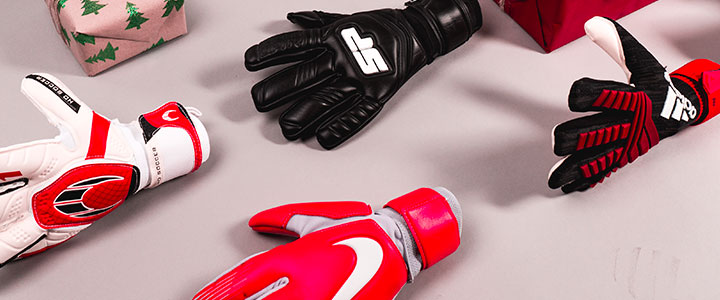
Goalkeeper Gloves
Glove material guide
Football gloves are a goalkeeper's most important piece of equipment. The palm is the most important part of the glove as it is the only thing between your hand and the ball during play. Your choice will be defined by answering the three questions above. The backhand is an important component if breathability, protection and the level of reinforcement are valued. The wristband and closure are also becoming increasingly important. Below, you can see the main characteristics of these elements. Therefore, there are several fundamental aspects to consider when choosing a glove model.
-
On what kind of terrain are we going to use them?
The type of terrain on which the glove is worn affects the durability of its materials. The more grip the palm has, the less resistant it is to erosion. If you play most of your matches on artificial turf, a glove with a high-end latex will suffer more wear and tear, but during its lifetime, its grip will be optimal.
-
How are we going to use it?
Its use is obvious: to stop balls. However, when choosing a glove it’s important to know if we’re going to use it only during matches or if we’re going to train with it. The erosion a glove experiences during one training session is the same as in five or six matches. If you want a glove model for training sessions and another for matches we recommend you to pick each of them with a different palm type. A glove with a mid/low-tier palm to train and the same glove with a top-tier palm to play is a recommended choice. This way, you’ll lengthen the efficiency of both glove pairs.
-
3. What kind of glove would suit me better?
Once you’ve chosen the tier (training, competition, etc) you need to decide what kind of glove provides you the better sensations.
Not all goalkeeper gloves are the same. The level of reinforcement and the materials used for the backhand and wristband mean that two pairs of gloves of the same quality can feel completely different to the goalkeeper. The cut of the glove (flat, rollfinger or negative) is important in this respect. It is important to note that one cut is not necessarily better than another; each has qualities that are better suited to the needs of the goalkeeper.
Once you have considered these three factors, you can look at the different components of a glove to choose the model that best suits your style of play.
Log in or
create your account
Your best self starts here. Come in and get in your prime